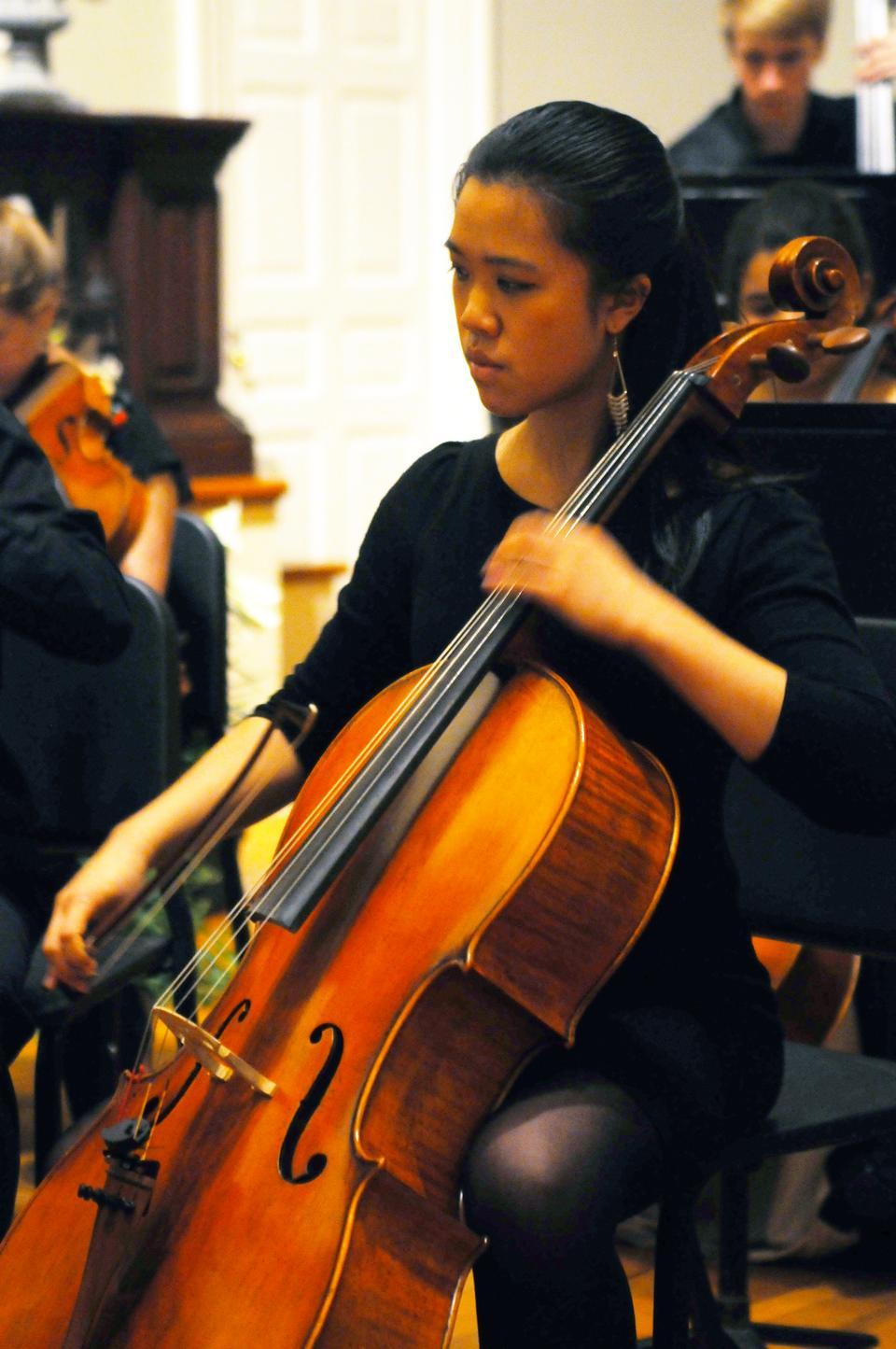
News
Cambridge Residents Slam Council Proposal to Delay Bike Lane Construction

News
‘Gender-Affirming Slay Fest’: Harvard College QSA Hosts Annual Queer Prom

News
‘Not Being Nerds’: Harvard Students Dance to Tinashe at Yardfest

News
Wrongful Death Trial Against CAMHS Employee Over 2015 Student Suicide To Begin Tuesday

News
Cornel West, Harvard Affiliates Call for University to Divest from ‘Israeli Apartheid’ at Rally
River Charles on the Rise

“Every individual [in the River Charles Ensemble] checks his or her insecurities at the door and engages in the work with the expectation to learn and contribute as much as possible,” cellist Theodore A. Peng ’13 said in his opening address to the audience. For the conductor-less student orchestra, this idea is essential to ensuring that each member actively takes part in shaping the group’s sound. The result is a clear bonhomie that translates into spirited, engaged performances and interpretations with a strong sense of direction. And while the ensemble’s Friday evening concert at Memorial Church was not without a few flaws, the performance was largely solid and, more importantly, emotionally perceptive.
The program’s first piece was a work from Gioachino Rossini’s opera “L’Italiana in Algeri,” a smart choice for a starter due to its light, carefree feel. The piece begins gently, and the orchestra excellently paced the mounting tension. Particularly beautiful were the oboe solos by Claire R. Leibowicz ’16, whose elegant glides and flourishes connected the piece. The flute solo, meant to be a companion to the oboe solo, was less successful, with a few false steps and a tone that was initially somewhat indistinct and breathy. But this improved as the piece went on, and the later call-and-response section between the woodwinds and the orchestra captured the playful, comic spirit of Rossini’s work.
The second piece on the night’s program was “Olé Guapa,” a tango by Dutch composer Arie Maasland, more commonly know as Malando. While most tango music uses strings, piano, and an accordion-like instrument called a bandoneón, this piece was written for a full orchestra. River Charles, however, performed it as a woodwind quintet, which fit the music surprisingly well. While the piece was a bit muddled in places, the group largely succeeded in using the distinct voices of the instruments, from the light flutes to the reedy bassoon, to draw out the many threads of the melody. The result was a complex rendition that still remained true to tango’s dark, sultry spirit.
Another program highlight was Edward Elgar’s “Introduction and Allegro for Strings.” The group’s rendition captured the pathos of the piece by stretching out notes and making skilled use of expressive vibrato. The violin solos in particular were plaintive and heart-rending, and their bittersweet notes were never drowned out by the swell of the other strings. The group also succeeded in evoking the full emotional range of the piece—the players were able to execute both the soft, wistful sections as well as those that required great force and intensity. Towards the middle, however, the rendition became dynamically flat; without some variation to help contour the piece’s subtle emotional shifts, it was easy to get lost in the sound.
The crowning achievement of the night was the performance of Beethoven’s Fifth Piano Concerto, which saw the culmination of the orchestra’s considerable skill. Guest pianist Allen L. Yuan ’15 from the Harvard College Piano Society helmed the piece, dazzling with his technical mastery from the first rippling arpeggio. The ensemble proved adept at balancing the many simultaneous voices and allowed the clarion-clear notes of the piano to shine. The dynamic complexity of the performance traced the emotional arc of the concerto, from boisterous energy to haunting tenderness.
Still, while it was a success overall, the performance of the Beethoven Concerto was not without technical issues. Most disappointingly, Movement II, the concerto’s famed quiet movement, lacked the emotional finesse that so defined the ensemble’s rendition of the first movement. While he did use rubato in places, Yuan’s delivery was rather measured overall: he glossed over notes he would have done well to linger on for a moment or two longer, and his relatively limited use of the damper pedal likewise undercut the movement’s delicate, contemplative air. Overly assertive woodwinds amateurishly overpowered the piano during the first crucial emotional transition. Another misstep came in the first movement, when the timing of the pizzicato strings became unglued from that of the piano they were trying to accompany. But the conductorless orchestra wasn’t derailed—communicating through body language and eye contact, the strings calmly managed to bring themselves back into line the next time the theme came around, pulling it off without a hitch.
The River Charles Ensemble’s passion, energy, and sense of community ultimately came through in their expressive, affecting performances. While not without mistakes, the players’ ability to self-correct and solve problems among themselves while performing was impressive, a fact that gave the clear impression that this is an orchestra on its way up.
—Staff writer Erica X. Eisen can be reached at eeisen@college.harvard.edu.
Want to keep up with breaking news? Subscribe to our email newsletter.
